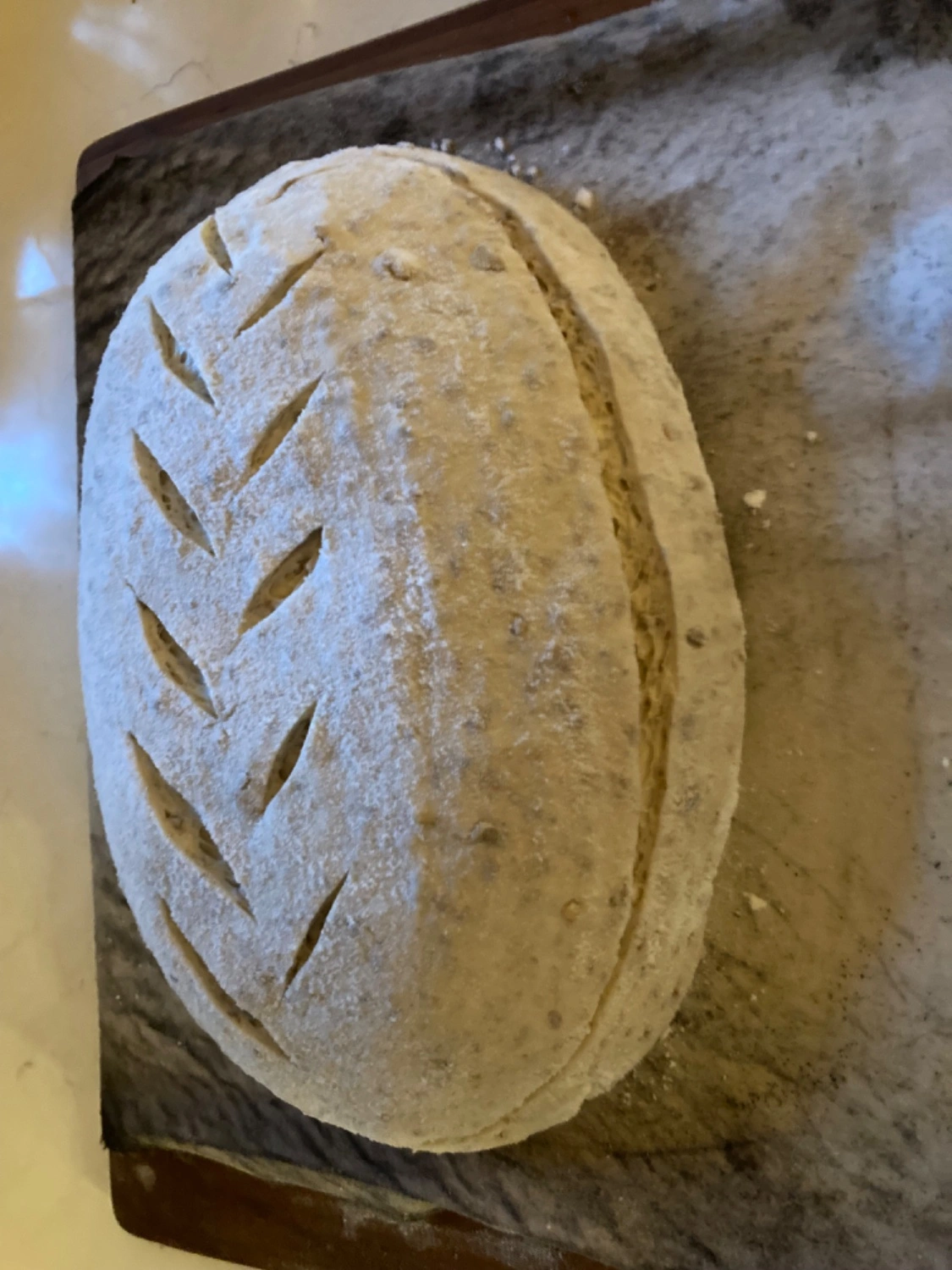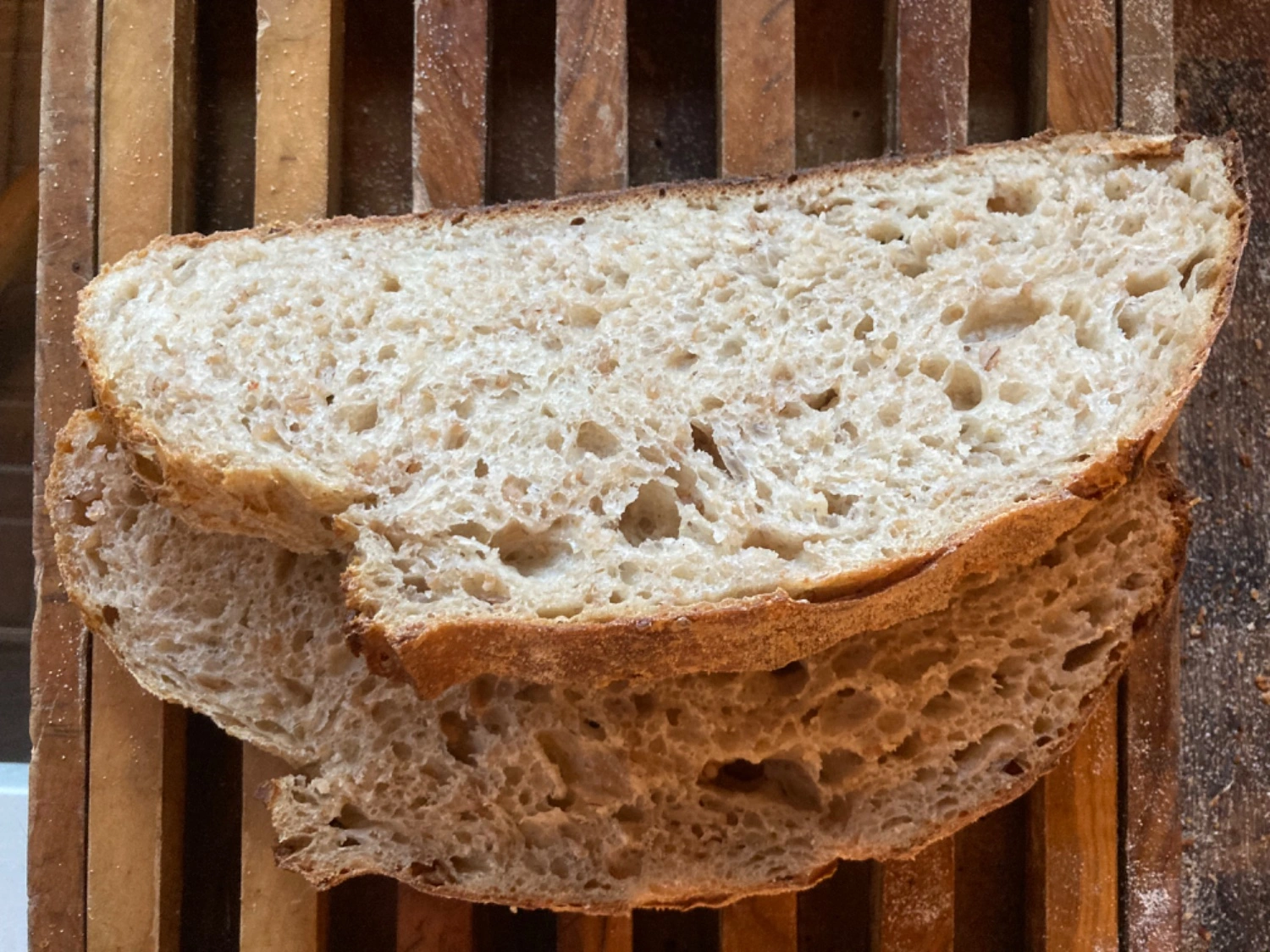

I’ve been refining my bread for the last decade, making all the bread my family consumes. Over the last couple of years I’ve arrived at something we are all really happy with. I’ll try my best to transmit what I’ve learned via this recipe. Feel free to ask questions in the comments.
- 100% bread flour
- 60% rye starter (1:1 course ground rye:water)
- 66% water
- 3% salt
Final hydration 74%
Example for one oval banneton:
- 500g bread flour
- 300g starter (150g water 150g course ground rye)
- 333g water
- 15g salt (preferably grey sea salt like Celtic)
Mix water, flour, and starter until fully hydrated. Sprinkle salt on top.
Wait 1-2 hours for autolyse and hydration.
Stretch and fold once every 30 min - 1 hour, at least 3 times and up to 5.
Bulk ferment 2 more hours.
Sprinkle liberally with rice flour, liberate from bowl with a plastic scraper, place rice flour side down in banneton, pinch top to stretch surface touching banneton, sprinkle rice flour on top.
Cover. Proof two hours or until banneton is filled.
Refrigerate 12 hours to 3 days, longer if more sour flavor is desired.
Preheat baking stone to 500°f / 260°c with a pan for water on a rack below the stone.
Liberate the bread onto a peel and score as desired. Place on stone and put a couple handfuls of ice cubes on the heated pan. Reduce temperature to 444° / 230°c and bake for 36 minutes.


I use rye for the starter because I enjoy the flavor, it seems to rise faster, and it seems to harbor more diverse microorganisms (this is just my unscientific subjective sense).
The higher percentage starter is just for ease of use, ending up with the percentage of rye I like and fully filling my starter jar. Basically all the amounts, times and temperatures are a bit idiosyncratic to my own process and not necessarily objective optimizations.
That’s how sourdough should be, in my opinion. The whole point of keeping a starter and making sourdough is that it’s yours.
I agree! My starter’s called Bubbly Jeff, child of Bubbles and Jeff the elder.